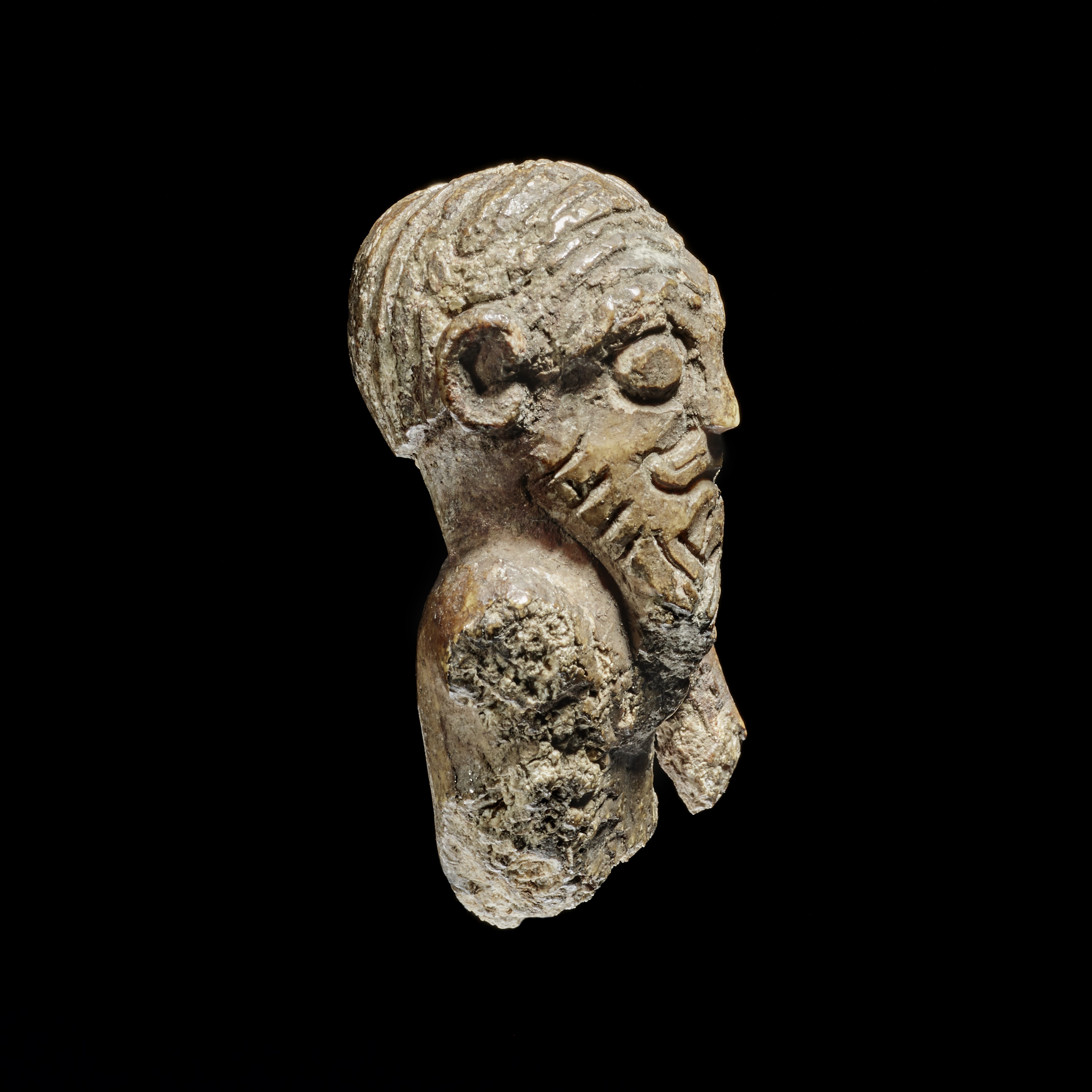A 1,000-year-old gaming piece made from walrus ivory may be the first depiction of an actual Viking ever found, revealing how these ancient Norsemen wore their hair. Sporting a center parting and sideburns, the miniature figurine – which probably represented a king – may also be stroking its massive beard in an apparent display of masculine virility.
The rest of this article is behind a paywall. Please sign in or subscribe to access the full content.
Originally discovered in a burial mound belonging to a Viking warrior in Norway in 1796, the three-centimeter high (1.2-inch) sculpture dates back to the second half of the 10th century CE and lay unnoticed in the collections of the Danish National Museum for several centuries. Recently, however, the piece was rediscovered by curator Peter Pentz, who has now penned an eye-opening analysis of the ancient relic.
“This is a miniature bust and as close as we will ever get to a portrait of a Viking,” said Pentz in a statement. “Hitherto, we haven’t had any detailed knowledge about Viking hairstyles, but here, we get all the details – even the little curl above the ear is marked,” he adds.
In addition to hair that is parted down the middle, the figure also wears a well-groomed moustache that twists upwards above the mouth, while his beard is trimmed into a goatee and braided into a single plait. “This is the first time we see a figure of a male Viking with his hair visible from all angles,” says Pentz.

The parallel lines on the figure’s cheek may represent sideburns.
Image credit: Roberto Fortuna, the National Museum of Denmark
Comparing the object to other similar figurines from across the Viking world, the researcher suggests that the carving is probably a king piece from the ancient chess-like game of hnefatafl, which was popular throughout the region. And while this particular kingpin’s beard and arms are incomplete, Pentz points out that most figures of this kind are depicted caressing their impossibly lengthy facial hair.
The study author therefore concludes that the miniature statue probably adopted this same pose when it was intact, and that “beard fondling” was typically seen as a demonstration of kingly power and male vigor in the Viking realm. For instance, he points out that “beard references in [Norse] sagas and poetry also function as indications of a healthy male, sexual potency, and martial strength,” and that facial hair “functioned as a proxy penis.”
“If we accept that the beard could be a substitute penis, the significance of the gesture consequently becomes crucial, and it is difficult not to see the beard stroking as an overtly sexually charged gesture,” writes Pentz. Yet while modern chess pieces may be somewhat less erotic, the author goes on to explain that the image of a king bashing one out was probably not considered grotesque in Viking times.
“The interpretation of the beard-stroking figurines as ‘royal fondlers’ or even masturbators might appear dubious or even bizarre,” admits Pentz. “However, to the Viking-Age Norse public, seeing the beardstroking as a sexual metaphor would not be as alien as it probably sounds today.”
The study is published in the journal Medieval Archaeology.
Source Link: This May Be The First Known Portrait Of A Viking – And It’s A Sexually Rampant “Beard Fondler”